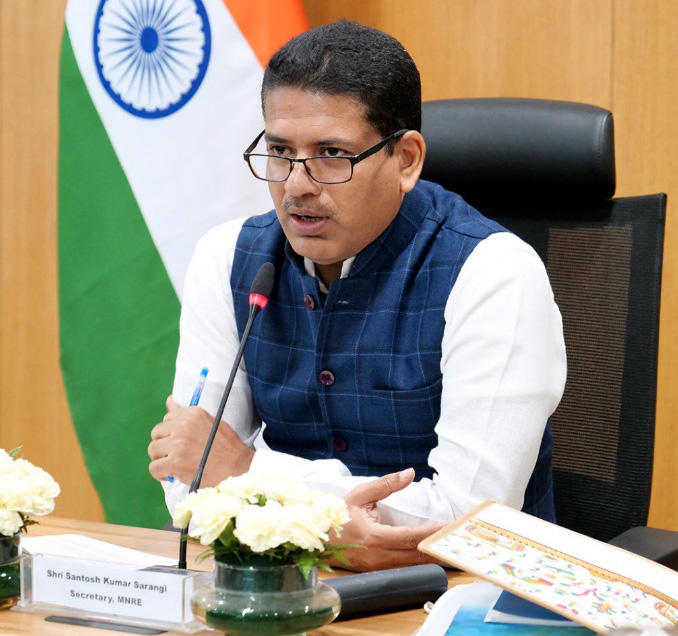New Delhi: India today proudly announced a significant milestone in its energy transition journey, with 50% of its installed power capacity now derived from non-fossil fuel sources. This remarkable achievement comes five years ahead of the 2030 target set under its Nationally Determined Contributions (NDCs) to the Paris Agreement.
Shri Santosh Sarangi, Secretary, Ministry of New and Renewable Energy (MNRE), engaged with International Media today, highlighting India’s accelerated progress and unwavering commitment to a sustainable future. He emphasized that this landmark feat underscores the effectiveness of India’s proactive policy measures and the robust participation of both public and private sectors.
As of June 30, 2025, India’s total installed electricity capacity stands at approximately 484.8 gigawatts (GW). Of this, 242.8 GW is now sourced from non-fossil fuels, comprising a mix of renewable energy (including solar, wind, and large hydropower) and nuclear power. This stands in contrast to the country’s thermal power capacity, which is currently around 242 GW.
The rapid expansion of non-fossil fuel capacity has been largely driven by an extraordinary surge in solar and wind power installations. India’s solar capacity alone has seen a phenomenal increase, surpassing 100 GW by January 2025 and reaching 116 GW by June 2025. Wind capacity has also more than doubled in the past decade.
While the achievement in installed capacity is a monumental step, Secretary Sarangi also acknowledged the ongoing focus on enhancing actual generation from these sources and addressing grid stability. The government is actively promoting energy storage solutions, such as pumped hydro and battery energy storage systems, and pushing for hybrid projects that combine various renewable sources with storage to ensure round-the-clock power supply.
India’s early attainment of this critical NDC target serves as a powerful testament to its dedication to combating climate change while simultaneously ensuring energy security for its rapidly growing population and economy. The nation is now firmly on track to achieve its ambitious goal of 500 GW of non-fossil fuel capacity by 2030, reinforcing its position as a global leader in the clean energy transition.


